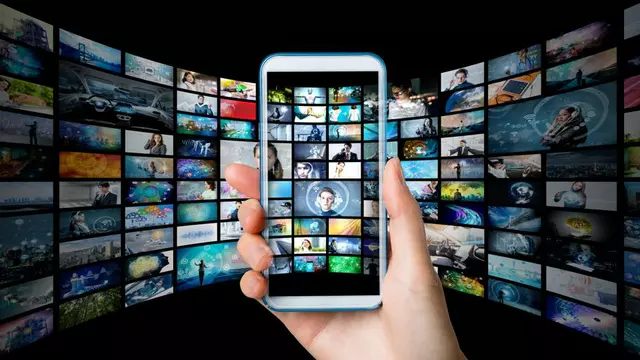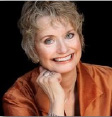The Changing Video Market for Satellites
by Elisabeth Tweedie
Los Angeles Calif., September 2, 2024 - While viewing habits may be changing, according to the latest Entertainment and Media (E&M) Survey from Price Waters Coopers (PwC), growth in the global entertainment and media market surpasses overall economic growth. The segment is forecast to grow at a compound annual growth rate (CAGR) of 3.9% in the five years to 2028, reaching a total value of US$3.4 trillion. From next year, the UK will overtake Germany to become the largest E&M market in Europe. Revenue will grow from £100 billion this year to reach £121 billion by 2028.
 |
Advertising, the fastest growing segment of the global E&M market, is projected to nearly double from the US$601 billion that it was worth in 2020 to US$1.17 trillion in 2028. In the UK advertising accounts for 39% of total E&M revenue, significantly more than elsewhere in Europe, where the average is 29%. It is also forecast to have one of the highest growth rates, a CAGR of 8% in the five years to 2028, in the region.
Accompanying this trend, the way in which companies are using advertising is also changing. Personal advertising continues to be pushed, and at the same time, closer links between viewing and purchasing are emerging, with the insertion of QR codes not only into the advertisements themselves, but also into programming. For example, during a cookery program, viewers may have the option to click on the code to find out more about the ingredients, and purchase them from online or even local stores.
Revenue from online connected TV ads is projected to double from US$20.5 billion in 2023 to US$41.2 billion in 2028. Some of this growth is being propelled by TV manufacturers such as LG and Samsung, both of which offer their own bundles of free advertising supported TV (FAST) channels on their connected TVs. LG has partnerships with Lionsgate, Filmrise, NBC Universal and Freemantle. It has recently announced an expansion of its offering, taking its LG 1 channel, currently available in the UK and Germany, to Spain, France and Italy later this year. LG 1 is a time-shifted channel, allowing viewers to watch linear streamed content, one hour later, than originally streamed.
 |
These personalized or addressable advertisements are becoming an increasingly important way to engage viewers and monetize content. During the Olympics, according to data gathered by Yopace, a dynamic advertisement insertion company, four billion one-on-one addressable advertisements were shown around the world, clearly showing the growing importance of ad-supported streaming.
Interestingly, a German company, BeSpatialAI has developed a solution for Business-to-Consumer (B2C) companies to use for precision location of target customers. According to the website, machine learning algorithms are trained on 103 layers of satellite and geographic information system (GIS) data to estimate the likelihood of people in a 100 square meter grid, purchasing a particular product. This leads to identification of the best locations for bpth digital and physical advertisements. The first application is for the financial services industry (FSI) and the website states: “Good vs bad location classification model accuracy reached 91% for a given customer in FSI industry.”
PwC is also forecasting that subscription-based streaming (SVoD) will continue to grow at a healthy CAGR of 5% from 2023 to 2028, to reach 2.1 billion global subscribers. Total subscription revenue will experience a similar CAGR to reach US$139 billion. Although advertising will account for only 28% of streaming revenue in 2028, it is growing at a much faster CAGR, 14%. As I’ve mentioned before, although the percentages vary by region, a growing number of subscribers are willing to adopt totally or partially supported advertising channels in order to reduce their monthly expenditure. The leading streaming providers, Netflix, Amazon Prime and Disney+ have recognized this and all of them now offer hybrid services, where in return for watching advertisements, subscribers pay a lower monthly fee.
The UK’s streaming market is the third largest in the world after the US and China, with 68% of households using Subscription Video-on-Demand services (SVoD). Netflix, is by far the leader in this market, with 58% of UK household subscribing to the service. Amazon Prime takes second place with 46.7 percent of viewers, according to statistics from Barb, the organization that measures TV viewing in the UK. Of the 17.1 million UK households that subscribe to Netflix, 16% of them subscribe to the lower priced hybrid service. In the US the numbers are even higher, with 42% of streamers using Advertising supported VoD (AVoD) and/or Free Advertising supported TV (FAST).
It really does seem that the video market is coming full circle, not only do we now have FAST TV, essentially streamed linear content, akin to broadcast TV. Bundling is now also making a reappearance. In the US, Comcast is bundling Peacock, Netflix and Apple TV+ into one package known as StreamSaver. Similarly, Disney, Warner Brothers Discovery and Fox are bundling their sports programing together to launch Venu Sports, a live sports bundle.
As if that wasn’t enough of a journey back to the past, co-viewing or watching with family and friends is also on the rise. The ability to watch content on demand, on phones and laptops, led to the demise of family viewing, and a rise of individual viewing. Now, research from Google in conjunction with Ipsos, indicates that in Europe, the shared experience is on the rise, particularly amongst connected-TV owners. However, this is less about watching linear TV, and more about watching VoD, and most importantly curated VoD. 75% of those surveyed said that they achieved a deeper connection with the people that they are watching YouTube with, as this is “personal” content that they have selected to share. An even higher percentage (80%) said that they felt good that they were sharing something they had chosen or were watching something that someone else had selected. One respondent commented: ““When I watch YouTube with my daughter I learn about her tastes, as she teaches me about the things she likes.”
The key to this is the ability to build your own “favorites” list and/or specify genres. The more you do this, the more the search algorithms learn your taste, so that the content presented is much more tailored to your tastes. This is known as the “Ikea Effect.” If you’ve had a hand in constructing your viewing list, or posted comments about something you’ve watched, you tend to become more attached to it, than watching linear TV, where there is no personal connection; hence the desire to share curated content with friends and family. For YouTube in particular, the option to engage with the content creators, adds another dimension, and even more interestingly, as far as the advertisers are concerned, a reason to watch the advertisements. One YouTube respondent commented: ““Most of the time ads on YouTube don’t really bother me at all. With some creators, if you have the option to skip, I’ll sit and watch it. I’ll watch the ads because I want them to get the revenue as I really appreciate the effort and time they put into their content.”
"...Revenue from online connected TV ads is projected to double from US$20.5 billion in 2023 to US$41.2 billion in 2028..."
So where does all this streaming leave satellite? Firstly, it must be remembered that video markets in the developed and developing markets are very different. Traditional video remains important in developing markets, particularly in those where the mobile phone is the most common device used for internet access. Even in Europe, it is far too soon to dismiss satellite. The latest TV Monitor from SES, shows that Europe is by far the largest geographic segment. 175.8 million of SES’ 369 million TV homes are located in Europe. Europe also accounted for most of the TV household growth, adding 6.3 million TV homes in 2022.
No article on Europe at this time, would be complete without some reference to the Paris Olympics. Unfortunately, for satellite, this is not good news. Satellite has been the backbone of Olympic broadcasting since 1964. This year Olympic Broadcasting Services (OBS) used OBS Cloud 3.0, an AI-enhanced platform, provided by Alibaba, as the primary distribution method. 54 broadcasters used this platform which transmitted 379 video (including 11 UHD) and 100 audio live feeds. The OBS Cloud was first demonstrated at the Tokyo Olympics, and used again at the Beijing 2022 winter Olympics when it was used by 22 broadcasters.
The 11,000 hours of content hosted on the OBS Cloud can be downloaded in three different resolutions, facilitating its usage on different platforms, including linear, digital and/or social media. It was also used for AI-enhanced 3D replays. Integration of AI and cloud-based technologies, enabled the generation of automatic highlight replays, and streamlined production to make it faster and more efficient.
The video landscape is a complex and evolving one. Connected or smart TVs, giving viewers the opportunity to curate their own content and see personalized advertising seem to be emerging as one of the keys to revenue growth. Given that according to Grand View Research Inc., the global connected TV market is expected to experience a CAGR of 11.4% to 2030, this is good news for the video industry. It is however, somewhat ironic, as one of the reasons for the initial growth of subscription streaming services was ad-free content!
And to end on a lighter note. Technology used to protect satellites from cosmic radiation in space, was incorporated into the swimsuits worn in this year's Olympics. The suits were coated in a durable water-repellent that enabled swimmers to glide more smoothly through the water. I wonder if there was a QR code letting viewers know where they could be purchased?
----------------------------------------
 Elisabeth Tweedie has over 20 years experience at the cutting edge of new communications and entertainment technologies. She is the Associate Editor of the Satellite Executive Briefing and the founder and President of Definitive Direction (www.definitivedirection.com), a consultancy that focuses on researching and evaluating the long-term potential for new ventures, initiating their development, and identifying and developing appropriate alliances. During her 10 years at Hughes Electronics, she worked on every acquisition and new business that the company considered during her time there. She can be reached at etweedie@definitivedirection.com
Elisabeth Tweedie has over 20 years experience at the cutting edge of new communications and entertainment technologies. She is the Associate Editor of the Satellite Executive Briefing and the founder and President of Definitive Direction (www.definitivedirection.com), a consultancy that focuses on researching and evaluating the long-term potential for new ventures, initiating their development, and identifying and developing appropriate alliances. During her 10 years at Hughes Electronics, she worked on every acquisition and new business that the company considered during her time there. She can be reached at etweedie@definitivedirection.com





